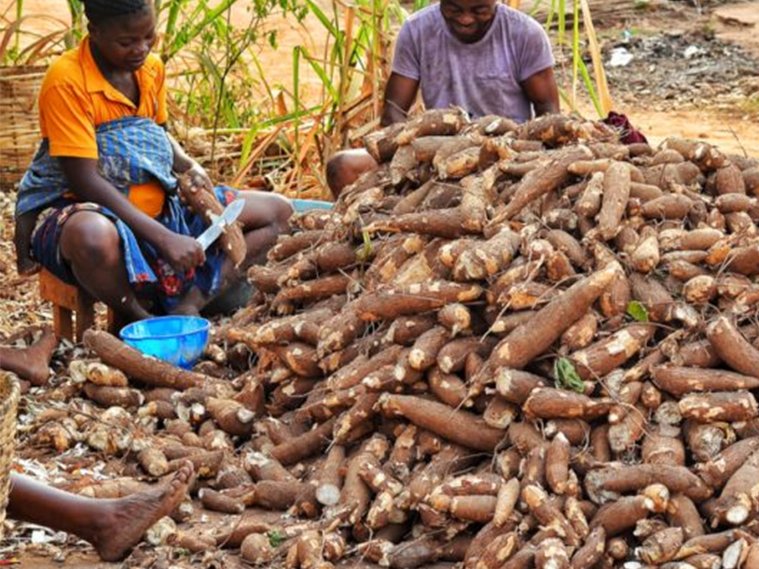By Murimi Gitari
Much of the waste ends up in dumpsites where it decomposes and attracts bacteria that produce methane – a greenhouse gas that is more harmful than carbon dioxide. Dr Pauline Mounjouenpou, a senior researcher at the Institute of Agricultural Research for Development (IRAD), Cameroon, has found better use of the cassava waste turning it into a biopesticide for preserving grains, helping to conserve the environment and reduce post-harvest losses among corn farmers.
Post-harvest loss of grains in Cameroon is about 40 percent and for a country that is not self-sufficient, this is a great loss. “The idea was to use the dumped waste cassava peelings in order to try and conserve grain and reduce post-harvest losses,” Dr Mounjouenpou said in her presentation on ‘case studies of agri-food system technologies and innovations for climate action’ at the World Food Forum.
“The fungicide considerably reduces post-harvest losses by 60 to 70 percent in corn when used in proper conditions. This will also see the limitation on the use of pesticides.”
The bio-pesticide is produced by having extracts of cassava peelings softened by soaking them into a liquid and then fermented and dried to come up with an active substance. Eight milligrams of the biopesticide are applied to over 100 grams of corn.
The product has 11 different microbial strains. Treating the grains with the biopesticide prevents moulds or fungi from developing. The conventional method of antifungal control consists of the use of chemical pesticides. But harmful effects both on consumers and biodiversity have prompted the search for new ways of preserving food that are less expensive, easy to implement and not harmful to the environment.
Dr Mounjouenpou’s research has made it possible to develop several innovations which contributed to improving producers’ income and alleviating food insecurity issues and malnutrition in Cameroon.
In 2020, her cassava research saw her to win an award for scientific excellence. Dr Mounjouenpou, who has authored about 100 scientific publications, has coordinated several multidisciplinary research projects and supervised the research work of about 50 students. She has also contributed to improving the livelihoods of the producers through the development of simple and innovative technologies that are applicable in rural areas.
Her work has led to the development of chocolate spread, cocoa butter, biscuits based on cocoa and corn flour, cocoa powder, soy – chocolate drink. In addition to these innovative technologies, the scientist also interested in food health security, and is studying the conditions for occurrence and control of the ochratoxin- A toxin associated with post-harvest losses among cocoa and coffee producers.
Dr Mounjouenpou made her presentation under the Science and Innovation Forum 2023 at the World Food Forum with one of its objective being to facilitate sharing experiences and lessons learned on implementing concrete solutions on the ground to step up climate action.
The session highlighted inspiring success stories of technologies and innovations at the crossroads of agrifood systems transformation and climate action. These success stories came from a Food and Agriculture Organization call soliciting illustrative countrylevel case studies of agrifood system technologies and innovations for climate action in different regions. Following a review of the submissions, the most impactful, compelling and relevant case studies were selected.
Dr Mounjouenpou’s presentation showed that her innovation is less expensive in terms of post-harvest losses control compared to other conventional methods. The biopesticide developed from the cassava peels is also environment-friendly and is not harmful to humans. It is also easy to use as it is in powder form and the raw materials for processing the product are easily accessible.

